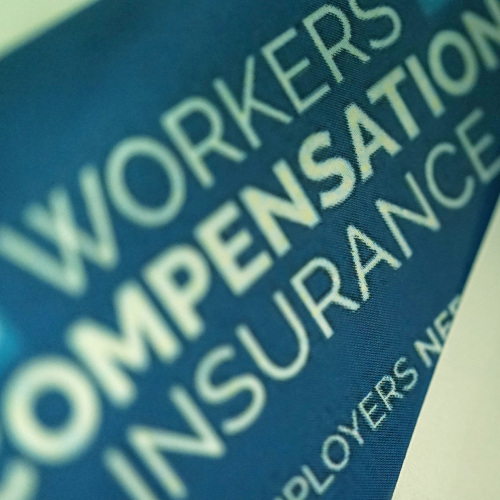ARTICLE
Workers’ Compensation Coverage Explained

What you need to know to protect your Firm
Workers’ compensation is a statutory scheme in each state that establishes the liability of employers when employees are injured in the course of employment, limits recovery against such employers to payment of workers’ compensation benefits (with limited exceptions), and outlines the covered losses and expenses an employee is entitled to receive when injured. For most employers in most states, the risk of a workers’ compensation claim is transferred to an insurance company, which pays claims under the policy in accordance with the applicable state’s statutory requirements in exchange for the employer’s premiums. Workers’ compensation applies based on where an employee resides and would receive benefits in the event of an injury. However, if an employee is temporarily working in another state, i.e., visiting a project site they may be able to claim benefits in the home or temporary state and often choose based upon the state that has the better paying benefits. Below we address when to add a state to your workers’ compensation policy.
Workers’ compensation policies have two coverage parts:
- Part One (often referred as coverage A) provides workers’ compensation coverage. This provides medical and indemnity (lost time) benefits for an injured employee.
- Part Two (often referred as coverage B) provides employers liability coverage. This coverage is for claims from workers who have suffered a job-related injury or illness not covered by workers’ compensation coverage. Part Two or B also covers damages to an employee’s spouse, parent, or child as a result of the employee’s injury, i.e., loss of consortium.

What does it mean to waive subrogation?
Learn the Laws of the states where you and your agents operate
Monopolistic Jurisdictions
In four states – North Dakota, Ohio, Washington, and Wyoming – an employer cannot buy workers’ compensation from any insurer other than a state-sponsored insurance fund. Because of this state-created monopoly in these four states for workers’ compensation insurance, they are referred to as monopolistic jurisdictions. In these monopolistic states, workers compensation policies do not include coverage for employers’ liability coverage (i.e., Part Two or B). To receive employers’ liability coverage, which is often required by contract, an endorsement amending the policy can be attached to an “All Other States” workers’ compensation policy or commercial general liability policy if you do not have employees in states other than the monopolistic states.
Below are the links where you can purchase coverage for these states:
North Dakota – North Dakota Workforce Safety & Insurance
https://www.workforcesafety.com/
Ohio – Ohio Bureau of Workers Compensation
https://info.bwc.ohio.gov/
Wyoming – Wyoming Department of Workforce Services
https://dws.wyo.gov/dws-division/workers-compensation/ng
Washington – Washington State Department of Labor and Industries
https://www.lni.wa.gov/
Be sure to manage your exposure
Employees Traveling Abroad
Workers’ Compensation Claim Reporting Lag Time (by Michelle Miller)
When an employee reports an on-the-job injury, the employer’s swift response often has a dramatic impact on the outcome of the claim. From the outset, it is important to be mindful of the variance of workers’ compensation laws from state to state. For example, in some jurisdictions, even an offhand complaint of pain by an employee obligates the employer to fully investigate whether the complaint is work-related. Upon notice of a claim, the first priority should be reporting the claim to the carrier to eliminate any potential coverage problems, and so that there can be a discussion about available treatment options, investigation, and general defense strategy. From there, the employer’s investigation should commence as soon as possible, to include an interview and/or written statement from the employee claiming an injury, statements from other employees who may have been involved or witnessed the incident, and review of any video footage available. Delays in gathering this information can often result in a weaker recollection of events, which could compromise the investigation. Ultimately, the employer’s ability to minimize the impact of an on-the-job injury claim often depends on how quickly the employer takes action once the claim is reported.
Michelle Miller, J.D., Principal/Consultant at MCM Workplace Solutions
AUTHORS

KRISTEN WALKER, CRIS, LEED
Kristen is a client executive and broker with Greyling, a division of EPIC. She is experienced in the unique coverage needs of both contractors and design firms. She works with mid-sized to large clients, many with global exposure and complex insurance programs.
Kristen founded the Greyling | EPIC sponsored Women in A/E/C Networking Events that provides a forum for relevant industry topics to be discussed by leading and up-and-coming women in a relaxed environment.
Kristen joined Greyling in 2012. Prior to that, she was a Senior Underwriter at Zurich focusing on both project and practice professional liability policies for owners, contractors, and designers. Kristen holds Construction Risk and Insurance Specialist (CRIS) and Leadership in Energy and Environmental (LEED) Green Associate designations.

KENT W. COLLIER, JD
MANAGING PRINCIPAL
Kent provides day-to-day service to Greyling clients regarding insurance and risk issues in the architecture, engineering, construction, environmental, and legal service fields. He brokers practice and project specific insurance placements for A/E, construction, and law firms across the country. Drawing on years of experience as a construction attorney, Kent is heavily involved in his clients’ recognition, reporting, and resolution of insured claims.
Kent performs risk management consulting for clients including preparation and presentation of educational seminars, compilation and analysis of risk surveys, drafting and negotiating professional services contracts, and answering various client questions concerning legal, insurance, and risk issues impacting the construction and engineering industry. He has experience presenting continuing education training to staff regarding risk management, contracts, and insurance topics.